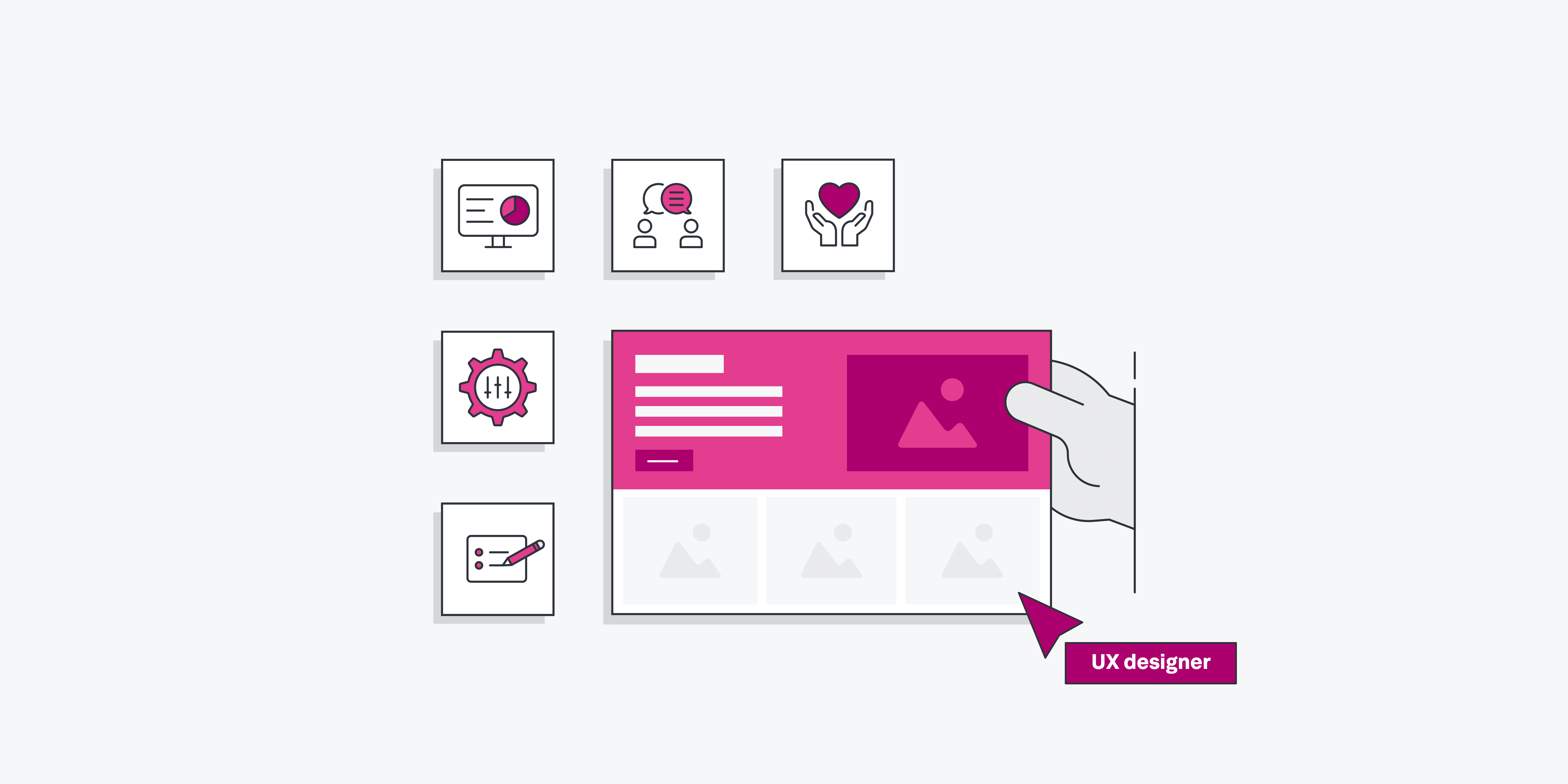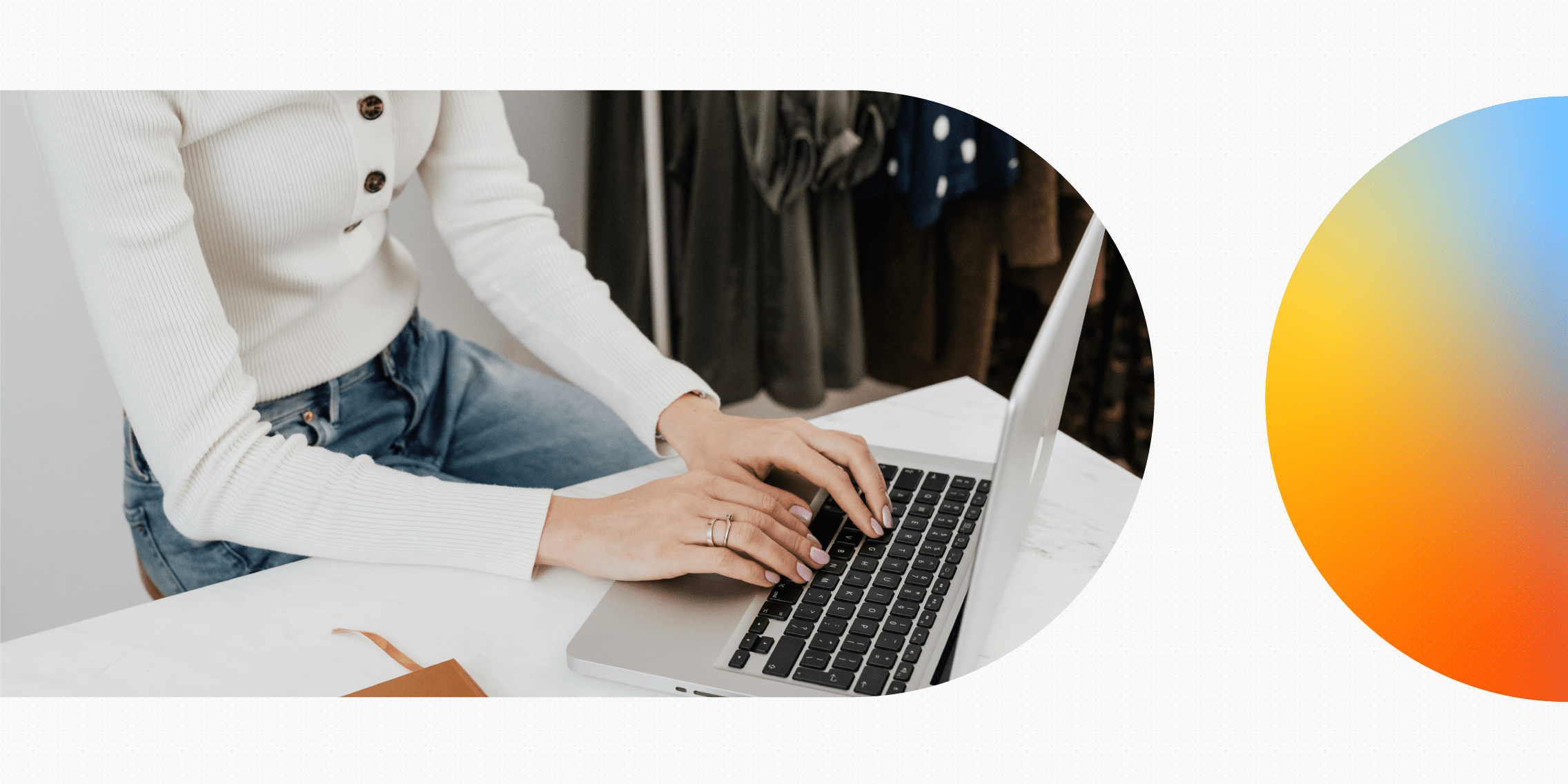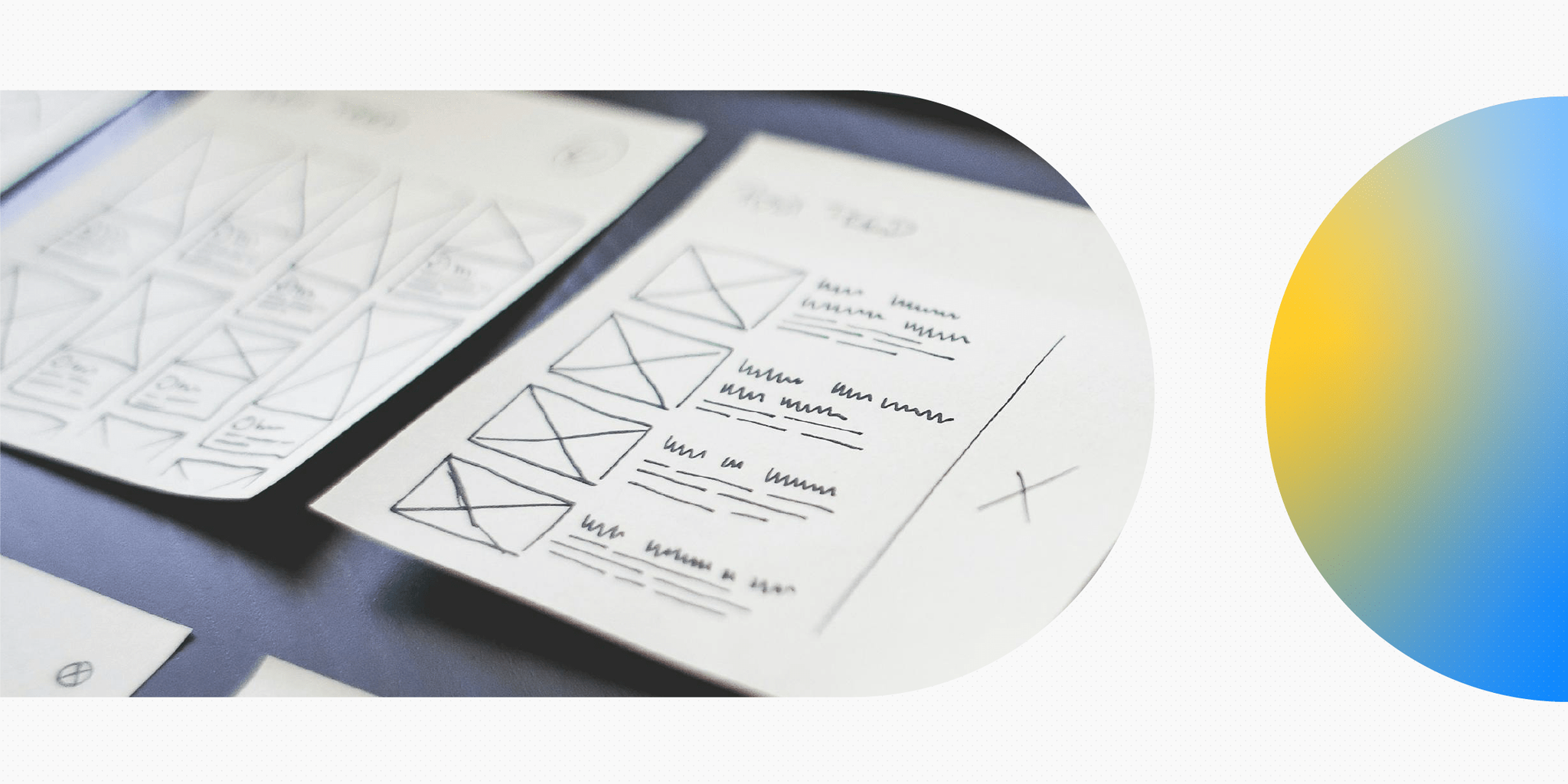UX design jobs are among the most popular and in-demand in the tech sector today. However, UX designers must be able to do more than specify how a webpage looks or what happens when a user taps a button in an application. So, what skills do you need to be a UX designer?
To be successful, UX designers must have a combination of soft, design and transferable skills that ensure they can complete the varied tasks that are part of the job. Fortunately, while there are many skills that UX designers need, the ability to understand code and develop technology isn’t one of them.
In this post, we’ll explore the most valuable skills for UX designers today by reviewing the following:
- What is UX design?
- What does a career in UX design look like?
- Soft skills for UX designers
- Design skills for UX designers
- Transferable skills for UX designers
Before we get into the skills UX designers need, let’s start with a brief overview of what UX design is and what a career in the field involves.
What is UX design?
UX stands for “user experience” and it describes how a user feels when they use a product or service. A good user experience is easy and enjoyable, while a bad user experience is complicated, confusing and frustrating.
UX design is the process of designing these experiences. It involves identifying and understanding a specific user problem and designing products or services to address the problem in a way that centres the user.
What does a career in UX design look like?
Careers in UX can vary widely depending on the kind of company a UX designer works for. Some work for large advertising firms, others for in-house UX teams at technology companies and still others for tiny start-ups.
Regardless of where they work, UX designers follow a design process that starts with a research phase, continues to a design phase and ends with a user testing phase. Although they may not be involved in every phase, it’s important that UX designers understand each part of the process and the numerous responsibilities and tasks included in each one.
Even though UX designers have a lot to do, the one thing they will never have to worry about is coding the final product. This ensures that major tech skills aren’t necessary for UX designers to perform their job. Instead, UX designers should advocate for the user at every stage of the design process.
Soft skills for UX designers
According to indeed.com, soft skills are “interpersonal and behavioural skills that will help you work well with other people and develop your career.” Soft skills are among the most useful for a UX designer to have, due to the breadth of the job and the vast number of people UX designers must collaborate and interact with. While they can’t be taught, you can improve your soft skills through practice. The most important soft skills for UX designers include:
Empathy for users
One of the most essential skills for a UX designer is the ability to understand and empathise with the user. After all, if a UX designer can’t put themselves into the mindset of the user and doesn’t feel compassion for their frustrations and pain points, they won’t be able to create meaningful and satisfying design solutions that address these issues.
Communication and collaboration
UX designers do not work in isolation. They must be able to collaborate with other members of the design team including graphic designers, developers, fellow UX designers and more. Plus, they must be able to share their ideas with clients and stakeholders. As a result, good communication skills are a must, as they’ll enable a UX designer to convey their vision for a project to both clients and colleagues. Meanwhile, UX designers who are good team players will make both their jobs and those of their colleagues easier.
Curiosity
One of the most exciting things about UX is that there’s always something new to learn, whether it’s understanding a client’s industry, discovering a new kind of app or device or researching an innovative user experience pattern. UX designers who are open and curious will ask insightful questions, stay current on the latest trends in the field, observing and learning wherever they go. This will enable them to look at a problem from original and unique angles that will make it more likely they will arrive at design solutions that clients, stakeholders and, most importantly, users will love.
Organisation and prioritisation
UX designers deal with an astonishing amount of information, including the requirements of the project and the user needs a product should address. Organising and prioritising this information will enable a UX designer to decide which parts of a project to tackle first and which aren’t as essential. Plus, if they’re working on multiple projects at once, the ability to organise and prioritise will ensure the UX designer will be as efficient as possible with their time.
Design skills for UX Designers
Design skills for UX designers are skills that are important specifically to the job of UX design. These are hard skills that can be learned in school, training programs or even at work. The most important design skills for UX designers include:
Visual communication
UX design is a job that hinges on creating visuals. While UX designers don’t have to dress their work up with images and colour, they do have to create designs that convey information and interactions in a visually appealing way. This means that whether they’re sketching or creating polished mockups for a project, UX designers should be able to communicate visually through elements like text size and placement, visual hierarchy, clickable links and buttons and, generally, a lack of clutter.
Wireframing and prototyping
Wireframing and prototyping are the cornerstone of any UX designer’s toolkit. There are many tools to accomplish these tasks – but the more important issue is whether a UX designer understands how and why they’re creating these documents to begin with. If wireframes don’t successfully convey an interface in its entirety and prototypes don’t represent interactions correctly, major mistakes can be made when developers code the product. UX designers should practice wireframing and prototyping until these skills are second nature.
User research and testing
Depending on where a UX designer works, UX design and UX research may be separate jobs. Still, it’s vital that all UX designers know how to perform and understand the results of user research and testing. They can then apply those results to their designs in the beginning phases of the project and after the design has been completed but may still require improvements. The key to both user research and testing is getting to know what users want through techniques like creating user personas, user interviews, card sorting studies and other data gathering methods.
Understanding the basics of tech
Don’t worry, this doesn’t mean a UX designer needs to know how to code or have any other programming skills. However, UX designers will need to understand the basics of tech so they know if what they’re designing can be implemented by a developer. At the minimum, if the UX designer has come up with an innovative solution to a problem, they should know when it’s necessary to seek the input of a developer to ensure the interactions they’ve specified can be successfully coded. If UX designers have these basic skills, they’ll be able to survive and thrive in the field.
Transferable skills for UX designers
Indeed.com defines transferable skills as “proficiencies that are useful in a variety of jobs and industries.” Luckily, whether you’re seeking a UX job right after graduating from college or you’re changing careers after years in another industry, you’ve likely acquired a number of skills that will be transferable to your work as a UX designer.
The most important transferable skills for UX designers include:
Critical thinking skills
Whether you’re coming to UX from school or another industry, you’ve likely spent time improving your critical thinking skills. That’s experience that will come in handy for a job in UX. UX designers must be able to evaluate, analyse and utilise all the information that’s relevant to a product in well-considered, creative and logical ways. Critical thinking skills enable UX designers to make smart decisions while ensuring they never lose sight of what’s best for the user experience.
Listening to and applying feedback
In almost any job or academic environment, you must learn to listen to feedback and apply it to your work. UX design jobs are no different, although the sheer amount of feedback might be. UX designers must be prepared to receive feedback and comments on their work from users, team members, stakeholders and clients without becoming defensive. Remaining flexible and open enough to appreciate and apply this feedback is an important part of the design process.
UX designers who either aren’t paying enough attention to feedback – or are reluctant to incorporate it into their designs – will have a more difficult time reaching optimal user experience and working with their clients and colleagues.
Understanding of business
This is a skill UX designers don’t always have but is invaluable to those who do. That’s because UX projects are conceived, initiated and completed because companies believe they can help meet key business objectives. UX designers who understand that will be in a better position to help the business and the user at the same time.
Whether your business knowledge comes from formal education or hands-on experience at another job, it will enable you to better comprehend and communicate how the product you’ve designed contributes to your client’s or stakeholders’ bottom line, enabling you to get quicker buy-in and ensuring the design process is easier for everyone.
Writing
Writing is so crucial to UX design that it’s increasingly common for UX teams to include a UX writer. These individuals compose the microcopy and other words that are essential to any UX design. Yet, even if a UX team includes a dedicated UX writer, UX designers must be able to write specifications and other information to successfully communicate the elements of their designs and how the user interacts with them. Fortunately, both academia and other industries tend to require at least some writing. The more you’ve honed this skill before making the transition to UX design, the better it’ll serve you in the UX field.
As you can see from this list, UX is a career that requires a great many skills. While that may seem daunting, it’s also what makes UX such a fun and fulfilling job. Plus, there’s no need to stress over learning a new programming language or becoming intimately familiar with coding. If you’re motivated to learn the UX design skills listed and you’re eager to cultivate your soft and transferable skills, you’ll find success in the field of UX with no major tech skills required.





